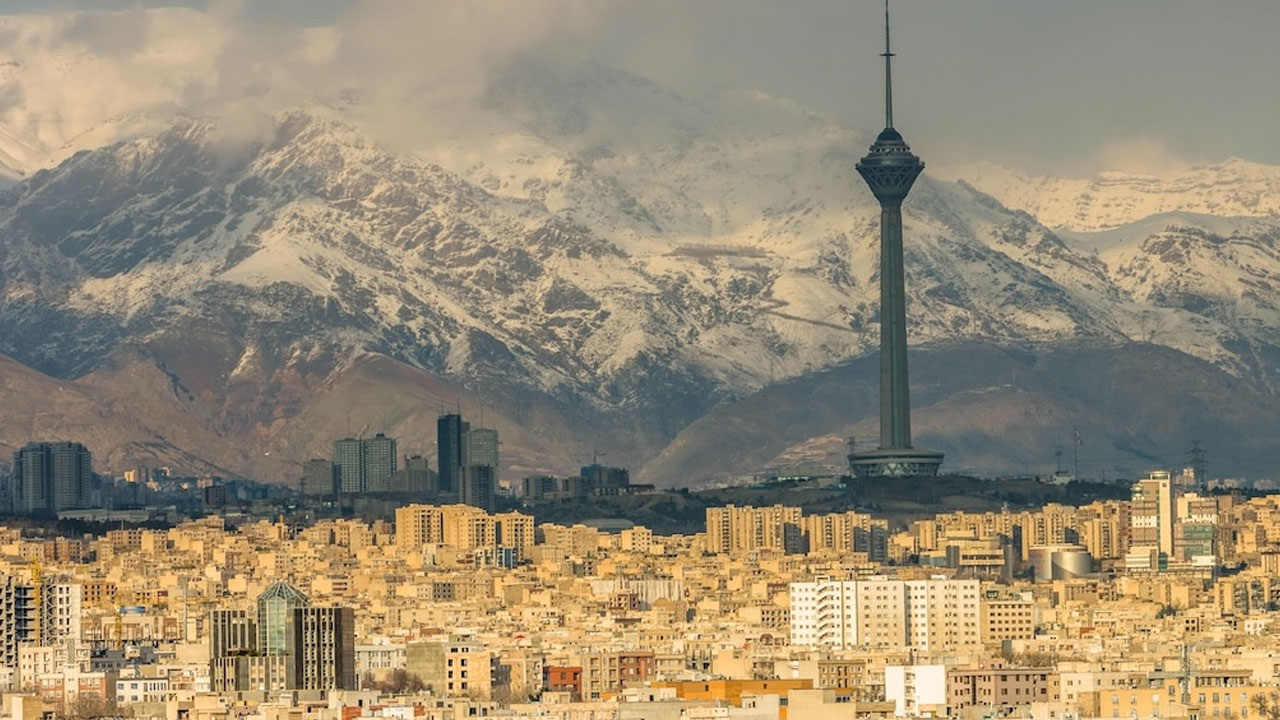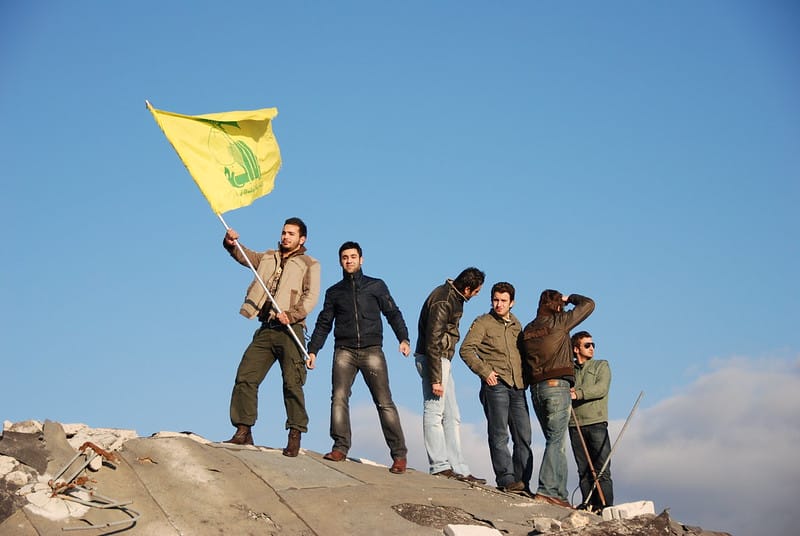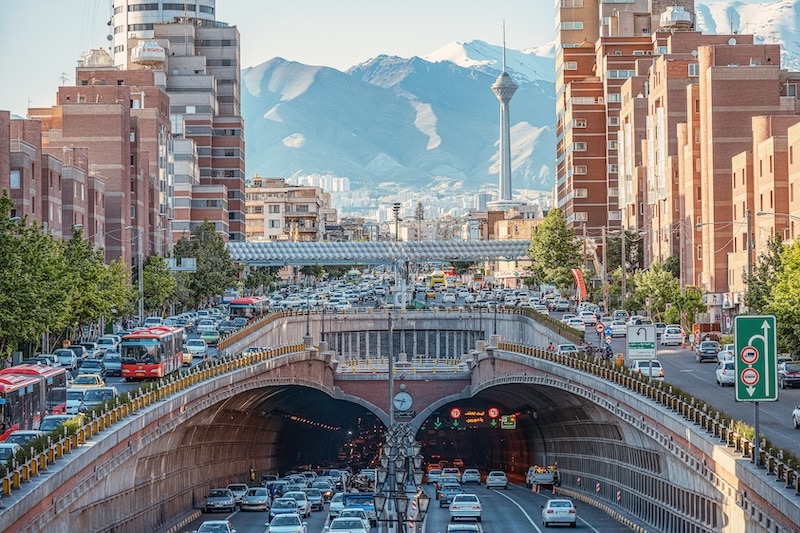Hezbollah and Iran

The Middle East has been a contentious area for many centuries, but in recent decades, there has been one major player contributing to the chaos: the Islamic Republic of Iran.
Iran is one of the largest and most influential nations in the Arab and Muslim worlds, with influence reaching far beyond its borders to nations directly surrounding Israel. Lebanon has recently been at the front of many people’s minds and global news stories because of the October 7 attacks in Israel and the subsequent war.
Since Black Saturday, violence has erupted on Israel’s border with Lebanon. The connection between the Lebanon-based Islamic militant group Hezbollah and the country of Iran is a well-known fact. A simple web search of the term “Hezbollah” turns up page after page of websites and articles identifying Iran as the sponsor of Hezbollah. Still, despite widespread knowledge of or at least familiarity with Hezbollah and its ties to the Islamic Republic, there is not much discussion concerning how this connection came about or what it means for the Middle East—and the world—today.
Let us take a deeper dive into the history, background, and intentions of Hezbollah and Iran and how it affects the area—particularly Israel as the only predominantly Jewish state in the region and the world.
Hezbollah’s Back Story
Hezbollah (from Arabic Hizb‘allah, meaning “Party of God”) was formed after Israel invaded Lebanon in 1982 during Lebanon’s civil war.1
On June 6, 1982, Israel launched a war against Palestinian terrorists expelled from Jordan who had taken root in southern Lebanon. A group from among these extremists attempted to assassinate the then-Israeli ambassador to the United Kingdom, Shlomo Argov, and Israel’s response was to push back the terrorists and create a buffer zone between Israel and Lebanon.2
In response to Israel’s military strike, Lebanese Shi’ite Muslim clerics created the organization known as Hezbollah, which focused on driving Israel out of Lebanon and attempting to establish the country as an Islamic Republic, as the Shi’ites had done in Iran.3

Coming on the heels of the Islamic revolution in Iran, Shi’ite4 militantism grew stronger, and nations with significant Shi’ite adherents—including Hezbollah in Lebanon—began to grow empowered due to the influence and support of the region’s largest Shi’ite regime, Iran.5
In the following decades, Hezbollah became stronger and more violent, carrying out a number of terrorist attacks against Israeli, Jewish, and Western targets not only in the Middle East but elsewhere in the world, including the Americas and Europe. These attacks included the bombing of the US embassy in Beirut in 1971, car bombings at Israel’s embassy in London and a Jewish community center in Buenos Aires in 1994, and the suicide bombing of a bus full of Israeli tourists in Bulgaria in 2012.6
Iranian Involvement
Since the Islamic Revolution of 1979, Iran has continued growing its capacity to create and support terror.
Through Iran’s proxies all over the Middle East, mainly via its Islamic Revolutionary Guard Corps (IRGC), the regime provides weapons, funds, and training to carry out its extremist agenda in the region.7 While Iran also has proxies in countries with a majority Sunni Muslim population, including Afghanistan, Yemen, Syria, and even the Palestinian territories, their primary proxies operate in countries primarily Shi’ite, including Iraq and Lebanon.8 Iran’s use of these multiple proxies has allowed them to avoid direct blame for the atrocities carried out on their behalf.9
Iran’s primary goal is clear: to remove what they consider Western interference from the Middle East at any cost.

One of Iran’s goals is to unite like-minded countries in the region to join in their so-called resistance movement.10 Their ideology highlights the evil of those they see as “Western occupiers,” which includes the State of Israel—the only Jewish country in the world and the United States’ strongest ally in the region. This view accounts for the mounting hostility against Israel and Jewish people worldwide, which has become especially evident since Hamas’ attacks in Israel on October 7.
There is also a strong indication that Iran’s involvement in recent attacks against Israel is an attempt to disrupt the normalization of relations between the Jewish state and neighboring friendly Arab countries. Iranian Supreme Leader Ayatollah Ali Khamenei referred to nations seeking normalization with Israel as a “gamble,” claiming those countries choosing to do so will “lose.”11 Hezbollah echoed this sentiment in a statement immediately following the October 7 attacks. They referred to the attacks as a “decisive response to Israel’s continued occupation and a message to those seeking normalization with Israel.”12
Hezbollah, Iran, and the Current Conflict between Israel and Hamas
Experts point out Iran’s involvement in Hamas’ October 7 attacks is evident. This is seen in Iran’s expressions of support toward the attacks as well as increased military activity among their proxies during and since.
For example, Yahya Rahim Safavi, the top military advisor for Khamenei and a former commander of the IRGC, admitted Iran supported the attacks. Safavi claimed Iran will continue to support Hamas until “the liberation of Palestine and Jerusalem.”13
In addition, Khamenei himself stated the Palestinian movement is in better shape since the attacks than ever before.14 Also, Houthi rebels in Yemen, supported by Iran, increased their attacks against Israel and Israeli targets in the Red Sea as an expression of solidarity with Hamas.15
Now, with Hamas’ infrastructure in Gaza mostly dismantled, all eyes are on Israel’s northern border, where Iran’s larger proxy is already ramping up its military assaults. Just one day after the October 7 attacks, Hezbollah launched dozens of rockets toward Israeli targets near the northern border, with some Hezbollah forces reportedly infiltrating into Israeli territory.16
We can expect hostilities in the north only to increase, which is especially concerning since experts say Hezbollah is more capable and better armed than Hamas.17 Some numbers estimate Hezbollah’s fighting forces to be 20,000 fighters and 30,000 reservists, with some 150,000 to 200,000 rockets.18
What Happens Next?
As tensions in the Middle East grow due to Iran’s influence, we expect increased threats and even full-scale attacks against Israel and her allies from Iran’s proxies, particularly Hezbollah. Hezbollah has already vowed revenge against Israel for responding with force to Hamas’ massacre and ongoing assaults, and with Iran increasing its proxy attacks across the Middle East, there is the potential for a much larger-scale conflict in the region.
While we continue to pray for the safety and welfare of Israelis within range of Hezbollah and other Iranian proxies, let us also remember to pray for those in Iran and Lebanon who are also suffering from the evil actions of Iran’s religious and political leaders. Lebanon has historically had a large Christian population, and Iran is considered to hold the fastest-growing church in the world.19
It serves us to remember there are well-meaning, godly, loving believers in Jesus in these countries. These are our Christian brothers and sisters; they, too, love Israel and Jewish people, and they pray to see evil forces—like the Islamic regime in Iran and Hezbollah in Lebanon—brought down and true freedom and justice to flourish.

Pray for the Middle East with Us
Believers in Jesus—including those in Lebanon—must understand Israel has the right to defend herself and preserve the Jewish nation as God has promised He would do. The Bible calls us to “pray without ceasing” (1 Thessalonians 5:16), so let us lift our voices together.
- We pray for a swift end to the conflict with Hezbollah in Lebanon, and we pray for the safety of innocent lives, especially those who love and serve the God of Israel and stand with His chosen people.
- We pray for the health and well-being of the citizens of northern Israel, whether remaining in the region or displaced for their safety.
- We pray for the soldiers of the Israeli Defense Forces stationed in the north.
- We pray for more Muslim Arabs to come to faith in Jesus.
- We pray God will swiftly cause the evil agenda of Iran and Hezbollah to fail.
- We pray the world will see the reality of the terror Iran’s proxies bring to the region.
- We pray for Jesus the Messiah’s ultimate peace to bring about the radical change of heart needed in the Middle East.
Sha’alu Shalom Yerushalayim! Pray for the Peace of Jerusalem!—Psalm 122:6
- 1. Adam Zeidan and Editors of Encyclopaedia Britannica, “Hezbollah,” in Encyclopedia Britannica, March 18, 2024, https://www.britannica.com/topic/Hezbollah. ↩︎
- 2. “First Lebanon War,” IDF, October 30, 2017, https://www.idf.il/en/mini-sites/wars-and-operations/first-lebanon-war/. ↩︎
- 3. Zeidan and Editors of Encyclopaedia Britannica, “Hezbollah.” ↩︎
- 4. There are two primary branches of Islam; Shi’ite and Sunni. ↩︎
- 5. Kali Robinson, “What Is Hezbollah?,” Council on Foreign Relations, October 14, 2023, https://www.cfr.org/backgrounder/what-hezbollah. ↩︎
- 6. Ibid. ↩︎
- 7. Kali Robinson and Will Merrow, “Iran’s Regional Armed Network,” Council on Foreign Relations, January 31, 2024, https://www.cfr.org/article/irans-regional-armed-network. ↩︎
- 8. Ibid. ↩︎
- 9. Ibid. ↩︎
- 10. Ibid. ↩︎
- 11. Ray Takeyh, “Iran’s Support Against Israel Bolsters Hamas,” Council on Foreign Relations, October 8, 2023, https://www.cfr.org/in-brief/irans-support-against-israel-bolsters-hamas. ↩︎
- 12. Jamie Dettmer and Christian Oliver, “Iran’s Support for Hamas Fans Suspicion It’s Wrecking Israel-Saudi Deal,” POLITICO, October 7, 2023, sec. News: Politics, https://www.politico.eu/article/iran-hamas-attacks-against-israel-palestine-jerusalem/. ↩︎
- 13. Ibid. ↩︎
- 14. Takeyh, “Iran’s Support Against Israel Bolsters Hamas.” ↩︎
- 15. Robinson and Merrow, “Iran’s Regional Armed Network.” ↩︎
- 16. Takeyh, “Iran’s Support Against Israel Bolsters Hamas.” ↩︎
- 17. Ibid. ↩︎
- 18. Jacob Knutson, “What to Know about Hezbollah’s Ties to Iran and Threat to Israel,” Axios, November 3, 2023, https://www.axios.com/2023/10/27/hezbollah-israel-hamas-war-invasion-gaza-iran. ↩︎
- 19. Sarah Eekhoff Zylstra, “Meet the World’s Fastest-Growing Evangelical Movement,” The Gospel Coalition, February 8, 2021, https://www.thegospelcoalition.org/article/meet-the-worlds-fastest-growing-evangelical-movement/. ↩︎
Sign up to receive our email newsletters
Get the latest news from Israel, insights from Dr. Mitch Glaser, international ministry reports, as well as videos and podcasts, downloadable resources, discounts in our online store, and much more!